Essential Tarot Card Spreads for New Readers
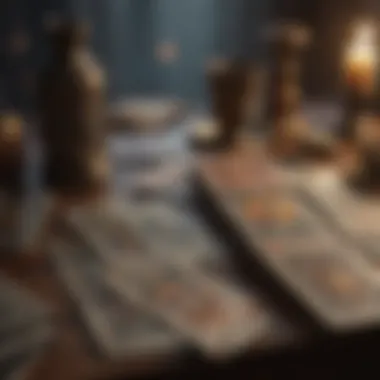
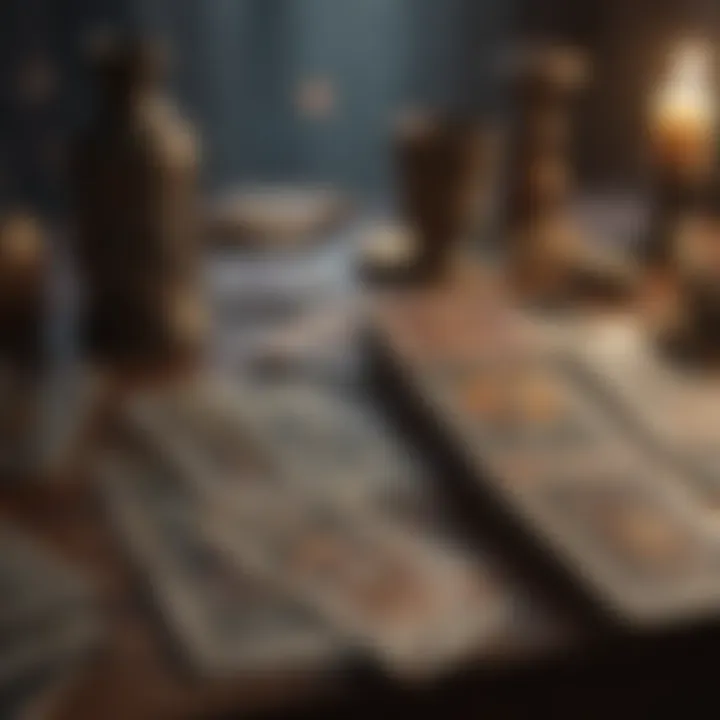
Intro
Diving into tarot can often feel like the waters are too deep for beginners. However, understanding tarot card spreads is essential for anyone looking to harness the power of these fascinating cards. Tarot spreads are like roadmaps; they guide readers and provide a structure to inquiries, ensuring clarity and insight.
Before we explore specific spreads, it’s crucial to grasp what a tarot spread is: a predefined layout of cards arranged to answer a particular question or explore a situation. Each position in the spread has a unique meaning, contributing to a holistic interpretation of the cards drawn.
By understanding the purpose of different spreads, beginners can evolve their interpretations. Each spread has its own strengths and can enhance your tarot practice enormously. Whether for self-reflection, personal growth, or even decision-making, knowing how to use these spreads is vital.
The aim of this article is to simplify the concept of tarot card spreads, providing a foundational understanding that allows newcomers to approach readings with confidence. Let’s take the plunge into the waters of tarot, shall we?
Basic Tarot Spread Concepts
What is a Tarot Spread?
A tarot spread refers to the layout of cards a reader uses in a tarot reading. Depending on the type of spread, the cards can reveal different aspects concerning the question at hand. Each card's position—along with its meaning—offers insight that helps the reader interpret what the cards are telling.
Importance of Spread Positioning
Every card's place has significance; it's akin to the various players in a play, where each has a role that contributes to the overall story. Understanding how card placement affects interpretation is crucial.
Common Tarot Spreads for Beginners
One-Card Pull
This is the simplest spread, often used for daily guidance. A single card drawn can provide insight into the day ahead or serve as a focal point for meditation.
Three-Card Spread
This spread uses three cards, traditionally representing the past, present, and future. It's an accessible way to unfold a narrative or analyze the evolution of a situation.
Celtic Cross Spread
As a more complex layout, the Celtic Cross spreads involve ten cards and offers a comprehensive look at a query or situation. Each card has a specific placement, addressing factors such as obstacles, influences, and probable outcomes.
Enhancing Your Reading Experience
As a beginner, it’s wise to approach each reading with a mindset of curiosity rather than rigidity. Keep a journal tracking your readings and reflections. Over time, you’ll cultivate your intuition and deepen your understanding of the cards.
"Intuition is a very powerful thing, more powerful than intellect."
— Steve Jobs
Using Intuition with Spreads
While the meanings of the cards provide a foundation, intuition is key for personal connection. Think of it as working with a paintbrush; though you know the colors, it's how you choose to apply them that creates unique artwork. Allow yourself the grace to explore beyond textbook definitions.
In summary, tarot card spreads serve as tools for personal development and insight. This article has outlined the fundamental structures and approaches novices should know. Next, we will look at specific spreads in greater detail, focusing on their unique contributions to the tarot journey.
Prolusion to Tarot Reading
The art of tarot reading serves as a bridge to self-discovery, reflection, and even foresight. For those just stepping into this fascinating realm, understanding the fundamentals is tantamount to developing a strong foundation. Tarot reading is not merely about predicting the future; it’s an introspective journey that allows individuals to examine their thoughts, feelings, and aspirations. In this section, we will explore key aspects of tarot reading, particularly the significance of understanding tarot cards and the purpose behind tarot spreads.
Understanding Tarot Cards
To embark on this journey, a beginner must familiarize themselves with tarot cards. Each deck typically consists of 78 cards, divided into two primary categories: the Major Arcana and the Minor Arcana. The Major Arcana, comprising 22 cards, represents significant life events or spiritual lessons. Cards like the Fool or the Tower capture profound themes, allowing readers to delve deep into existential questions.
On the other hand, the Minor Arcana consists of 56 cards that illustrate everyday aspects of life, categorized further into four suits—Wands, Cups, Swords, and Pentacles. Each of these suits resonates with different experiences, emotions, and challenges.
Understanding the symbols and imagery on each card is crucial. For instance, the Three of Swords often signifies heartache or betrayal, while the Ace of Cups may indicate new emotional beginnings. Familiarity with these meanings can facilitate richer dialogues during readings and generate more meaningful insights.
Purpose of Tarot Spreads
At the heart of tarot reading lies the concept of spreads. A tarot spread is essentially an arrangement of cards laid out with specific placements, each containing its unique meaning. The purpose of using spreads is to create a structure for interpretation, enabling readers to extract nuanced insights from the cards.
Spreads can serve various intentions. For instance, a Three-Card Spread can succinctly provide a snapshot of past influences, present situations, and future possibilities, making it ideal for beginner readers. Alternatively, more complex spreads like the Celtic Cross offer in-depth analysis, tackling multiple layers of a situation.
Utilizing spreads also encourages the reader to establish a framework for their interpretations, helping them avoid getting lost in the sea of card meanings. It’s a guiding light that directs focus and understanding toward specific areas, whether it be personal growth, emotional health, or decision-making.
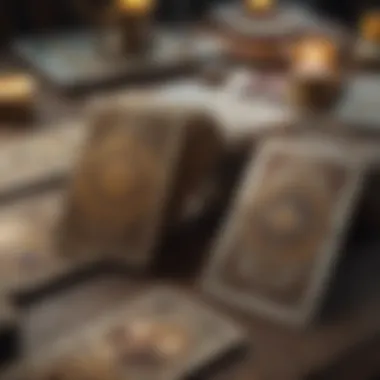
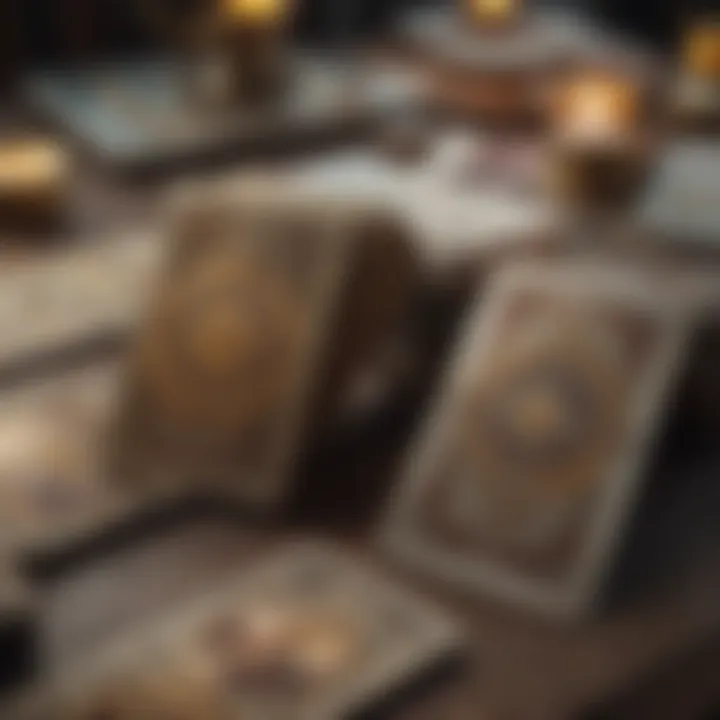
"Tarot reading is like navigating through foggy waters; a well-placed spread can help pilot your vessel to clearer shores."
In summary, establishing a solid grasp on tarot cards and the purpose of tarot spreads lays the groundwork for a meaningful and enriching tarot journey. As we progress into the foundational concepts of spreads, readers will uncover the intricacies of interpreting these heartfelt messages.
The Basics of Tarot Card Spreads
Understanding the fundamentals of tarot card spreads is crucial for anyone looking to dive into the world of tarot reading. Not only do spreads provide a structured framework for interpretation, but they also enhance the reader's connection to the cards. These arrangements help to encapsulate the dynamic energies of a reading, guiding the querent in their quest for clarity and insight. In a world where uncertainty often reigns, having a clear methodology can be a breath of fresh air. Additionally, familiarity with spreads enables beginners to approach readings with confidence, avoiding the pitfall of feeling overwhelmed by the sheer number of cards and meanings.
The significance of grasping the basics extends further; it opens a door to deeper magical practices and personal growth, enriching one's experience. Let’s delve into the specifics of what defines a tarot spread and take stock of its core components.
What is a Tarot Spread?
A tarot spread is essentially a specific layout of cards, each selected card occupying a distinct position that influences its meaning. Unlike drawing a card at random, a spread involves an organized method that directs the reader’s attention to particular areas of the querent’s life.
While there are countless spreads available, they all share a common goal: to facilitate a conversation between the querent and the universe. It provides a moment to pause and reflect. For instance, the popular Three-Card Spread allows for straightforward interpretations across different timelines—past, present, and future—making it ideal for beginners. This type of spread is widely recognized because of how it condenses complex interpretations into manageable insights.
It’s worth noting that the choice of spread can shape the questions asked during the reading. Meaning, a well-thought-out spread aligned with the querent's queries can pave the way for profound revelations.
Common Components of Spreads
Understanding the individual components of tarot spreads helps beginners comprehend how various aspects come together for a complete reading. Below are common elements found across most spreads:
- Positions: Each card's placement holds its significance, often tied to a specific question or area of life. For example, a card in the position of ‘obstacles’ may represent challenges the querent faces.
- Cards: The cards themselves, from both Major and Minor Arcana, carry meanings that bleed into their positions. A Major Arcana card can speak to significant influences, while Minor Arcana cards may deal with day-to-day challenges.
- Questions: The underlying questions directed at the reading often inform the card selection, giving direction to the interpretation. Both the querent's original question and subsequent queries that arise during the reading are essential for context.
- Interpretation: This is, arguably, the most critical part of the spread, where the reader bridges the insights from the positions and cards to provide a narrative that resonates with the querent's life experience.
"Tarot spreads are like maps; they guide us through the labyrinth of our thoughts and feelings, illuminating paths we may not have considered before."
Popular Tarot Spreads for Beginners
When it comes to tarot reading, spreads serve as the backbone of the practice. For beginners, understanding the various tarot spreads is crucial, as they provide the structure to the reading process. Each spread is designed to shed light on different aspects of one's life, thereby enhancing clarity and insight. From simple three-card spreads to more intricate layouts like the Celtic Cross, each offers unique perspectives that can be beneficial for self-reflection and decision-making.
The importance of choosing the right tarot spread cannot be understated. A well-chosen spread will align the questions being asked with the insights offered by the cards. This alignment is vital, as it determines how effectively a reader can draw connections and decipher meanings.
One can think of tarot spreads similar to the tools in a craftsman's toolkit; the right tool can make the job easier and produce better results. In this segment, we will explore some of the most popular spreads that novices often turn to, focusing on how they function and what benefits they provide.
Three-Card Spread
Interpretation of Past, Present, Future
The three-card spread is a beginner's favorite for a reason. It offers a straightforward approach to understanding one's life journey by breaking it down into past, present, and future. Each card represents a specific timeframe and, thus, provides crucial insights into how past experiences shape current situations and potential futures.
One key characteristic is its simplicity. The three-card spread is accessible, making it less intimidating for new readers. It doesn't overwhelm with complexity yet still delivers meaningful guidance. This spread's unique feature lies in its adaptability; it can be tailored to address specific queries, whether one is seeking insights into relationships, careers, or personal growth. However, one disadvantage is that it can oversimplify more complex questions, which may require deeper exploration.
Common Uses and Limitations
The common uses of the three-card spread are varied. Many beginners employ this layout to gain quick insights into pressing questions or dilemmas. It's often used in daily pulls where the focus is simply on what energies or influences are at play.
One limitation to consider is that this spread may not capture the full scope of a situation. While it does provide a snapshot, it lacks the depth required to tackle more nuanced issues. This limited perspective can leave the querent wanting more, especially if they are looking for detailed answers or a comprehensive understanding.
Celtic Cross Spread
Detailed Analysis of Life Situations
The Celtic Cross spread is something that often baffles newcomers due to its complexity. However, once understood, it offers a thorough analysis of single life situations. With ten cards laid out in a specific pattern, this spread addresses various dimensions—from obstacles to external influences—providing a comprehensive view of the matter at hand.
What makes the Celtic Cross engaging is its depth. Each position in the spread has its own meaning, allowing for distinct insights. This can be especially beneficial for those navigating significant life changes or decisions. A drawback, however, is that the complexity can be overwhelming, making it potentially unsuitable for those just starting out.
Adaptations for Beginners
For beginners, adapting the Celtic Cross can help simplify the process while still retaining the essence. Focus on fewer cards, choose key positions relevant to the query, and gradually expand as confidence grows. By prioritizing the most relevant aspects, one can harness the effectiveness of the Celtic Cross without diving into its full intricacies right away.
The beauty of this adaptation is that it allows for tailored readings, focusing on what's truly important while still offering depth. This flexibility makes it a worthwhile choice, even for those who may initially hesitate at its complexity.
One-Card Draw
Simple Reflection and Guidance
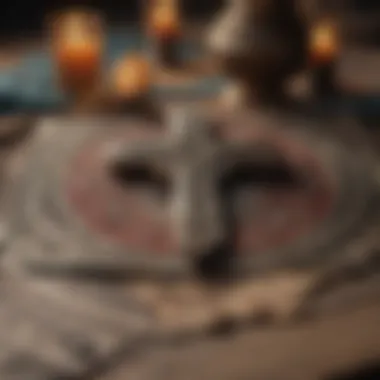
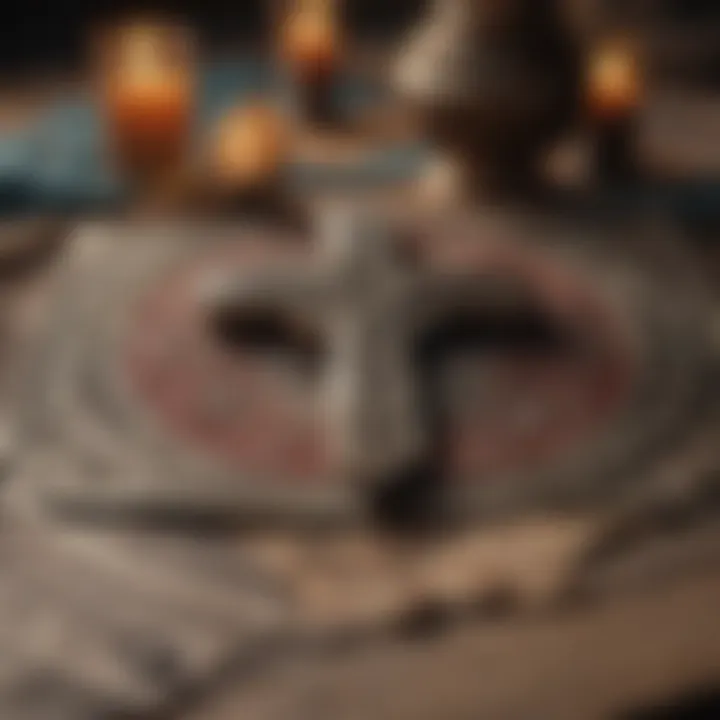
A one-card draw is perhaps the simplest form of tarot reading. It provides a focused reflection on a specific question or theme, making it perfect for quick guidance. This straightforward method encourages clarity of thought and concentration on a single aspect of one’s life.
The strength of this approach lies in its minimalism. Each card drawn serves as a clear, distilled message related to the querent's inquiry. It’s beneficial for those who may feel overwhelmed by extensive readings or intricate spreads, providing immediate, actionable insight. However, the downside is that it might not provide sufficient depth for more complex issues, as it lacks the multiple layers of context offered by larger spreads.
Best Practices
When using the one-card draw, it’s crucial to formulate a clear question. The quality of the insight gained is often tied to the precision of the inquiry. It's also essential to remain open-minded; sometimes the message can be unexpected, but that does not lessen its importance.
Whatever card is drawn, take time to reflect on its implications in relation to your life. This practice can even be integrated into a daily routine, fostering a deeper connection with the cards over time. The simplicity of the one-card draw is what makes this practice so approachable, but the importance of engaging with it thoughtfully cannot be overstated.
Relationship Spread
Exploring Dynamics and Connections
The relationship spread is specifically designed to unpack the complexities of connections between individuals. By examining various positions that relate to both parties involved, it's possible to gain valuable insights into the emotional and energetic dynamics at play. This focus on relational aspects makes it particularly useful for anyone navigating partnerships, friendships, or familial ties.
One key feature of this spread is its ability to highlight strengths and weaknesses in relationships. This clarity can empower individuals to tackle issues head-on or appreciate the positive attributes in their connections. Its unique feature is that it often reveals not just the personal viewpoints but also underlying issues and mutual influences.
Questions to Consider
When engaging in a relationship spread, the questions posed are pivotal. They guide the flow of the reading and determine the usefulness of the insights gained. A typical question might revolve around understanding feelings, intentions, or future possibilities.
The notable advantage of creating specific questions is that it can yield profound revelations about one’s relational landscape. A potential disadvantage might be that vague or poorly framed questions could lead to muddled insights. Therefore, clarity is key in formulating questions that prompt introspection and understanding, keeping the focus on illuminating the relationship dynamics effectively.
Techniques for Effective Reading
Reading tarot is not just about laying cards and interpreting their meanings; it's a skill that combines intuition, preparation, and a conducive atmosphere. By honing effective reading techniques, beginners can create a foundation that supports their journey into the world of tarot. Whether you’re dabbling in card meanings or reading for friends, understanding how to set intentions, create an inviting ambiance, and grasp the nuances of card meanings will elevate your experience significatly.
Setting Intentions
Before even shuffling the deck, setting intentions gives clarity to the reading process. It’s kind of like deciding on the destination before embarking on a journey. When you focus your mind on what you seek to learn—perhaps gain insight about a relationship or clarify a career path—you guide the energy of the reading in a specific direction.
- Benefits: It fosters a more meaningful conversation between you and the cards. It’s less like flipping through a puzzle and more like finding the missing piece that you've been searching for.
- Considerations: Don't rush this process. Spend a moment in quiet reflection or even jot down specific questions you want to explore further.
Creating a Conducive Environment
A little effort in crafting the right environment can go a long way. Think about where you feel most at ease, free from distractions. This means turning off your phone, silencing the TV, and closing the door for a bit of privacy.
Moreover, consider setting up a space that feels sacred or inviting. Lighting a candle, burning some incense, or even playing soft music can set the tone. An environment that resonates with you will enhance your focus and let the intuition flow.
Understanding Card Meanings
Understanding card meanings is fundamental in tarot reading. Every card carries its own stories and insights. However, it’s crucial to differentiate between the Major Arcana and Minor Arcana as each serves a unique function in a tarot spread.
Major Arcana vs. Minor Arcana
The Major Arcana consists of 22 key cards that represent life’s bigger themes, significant events, or spiritual lessons. They are like the heavyweights of a deck, conveying deeper meanings and offering insights that can be transformative.
- Key Characteristic: Each card stands alone and often represents crucial life changes or lessons that must be addressed.
- Benefits: As a beginner, knowing how to read these cards effectively can aid in understanding deeper psychological and situational aspects of life.
On the other hand, the Minor Arcana delves into everyday experiences and influences. Composed of 56 cards, this part of the deck breaks down into four suits, similar to a playing card deck. Each suit represents aspects of daily life.
- Unique Feature: The Minor Arcana focuses on more granular details of situations, making them less about grand shifts and more about noticing patterns in daily life.
- Advantages: For beginners, these cards offer an approachable entry point into tarot. They allow a detailed exploration of specific situations rather than broad strokes.
Symbolism and Imagery
Every card is layered with symbolism that speaks volumes. Engaging with the imagery can turn a mundane reading into a ripe narrative bursting with life.
- Key Characteristic: Imagery can evoke feelings or insights that bare no written explanation. It allows the reader to connect intuitively.
- Benefits: This connection can be particularly beneficial for beginners who might struggle with memorizing meanings. Focusing on imagery can spark deeper insights, sometimes revealing the truth that words cannot.
Ultimately, understanding symbolism enriches the reading experience, turning a simple card flip into a dynamic conversation. Paying attention to symbols can enhance accuracy and relevance of readings, leading to captivating, soul-affirming experiences.
"A word of caution: tarot is as much about intuition as it is about knowledge. Trust your instincts while incorporating these techniques."
Challenges New Readers May Encounter
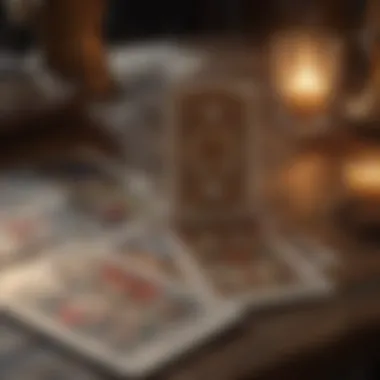
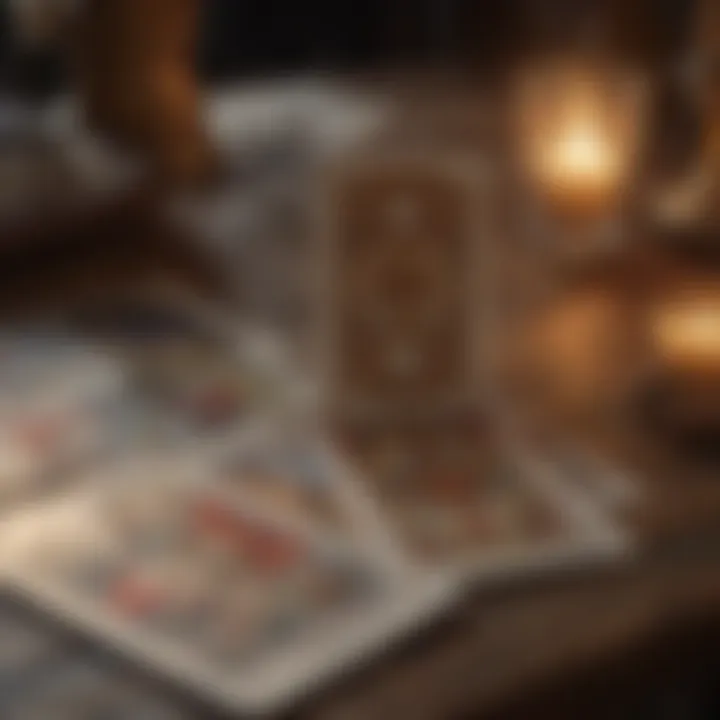
For those starting out with tarot reading, the adventure is often not as straightforward as one might hope. Beginners can face unique hurdles that, if unaddressed, might hinder their ability to connect deeply with the cards. Understanding the common challenges will prepare new readers for a more enriching experience. This section emphasizes the importance of recognizing these obstacles, enabling readers to approach their practice with clarity and courage.
Interpreting Card Positions
One of the most challenging aspects for a newcomer is interpreting card positions within a spread. Each position carries specific meanings that can radically alter the interpretation of the cards drawn. For instance, in a three-card spread, the first card could represent the past, while the second reflects the present and the last showcases potential future outcomes. Misunderstanding these roles can lead to confusion, making the reading feel disjointed.
- Get to know common layouts: Familiarizing oneself with popular spreads can ease this worry. Understanding what each position signifies is vital. Beginners may want to consider jotting down notes or creating a reference sheet for quick access while practicing.
- Practice makes perfect: The more time spent engaging with different spreads, the clearer these positions will become. A regular practice schedule can shift uncertainty to confidence over time.
Dealing with Ambiguity
Tarot cards are inherently abstract. Their images and symbols often hold multiple meanings and can evoke different feelings and insights depending on context. This ambiguity can be particularly intimidating for those still finding their footing in the tarot world. Initially, one may struggle to discern which interpretation is most relevant at a given moment.
"Tarot is less about finding right answers and more about prompting insightful questions."
- Embrace the uncertainty: Accepting that not every reading will be crystal clear is key. The value in tarot lies in the introspection it can provoke. Rather than forcing a definite answer, take time to reflect on the messages the cards might convey.
- Ask open-ended questions: Rather than seeking concrete answers, try phrasing questions in a way that encourages exploration. This way, the reading can guide you toward personal insights rather than specific predictions.
Overcoming Anxiety in Readings
Anxiety can be a silent killer when it comes to the tarot experience. New readers might feel pressure to perform well or be fearful of making mistakes in their interpretations. This anxiety can become a barrier that distances them from the very essence of tarot, which is meant to be an enlightening tool for self-discovery and guidance.
- Create a calm space: Before beginning a reading, set up a space that feels safe and welcoming. Whether that’s lighting a candle, playing soft music, or simply finding a quiet evening, having a conducive environment can significantly diminish anxious feelings.
- Remind yourself of the journey: Remember that every seasoned reader was once a beginner. Recognizing that mistakes are part of the learning curve can empower you to face your fears. Each reading offers valuable experience—view them as educational opportunities rather than tests of skill.
Embarking on the journey of tarot reading is a process filled with trials, reflections, and personal revelations. By acknowledging and tackling these common challenges, new readers can foster a more harmonious relationship with their tarot practice.
Integrating Tarot Spreads into Daily Life
Incorporating tarot spreads into your daily routine can open up an avenue for self-discovery and personal insight that many find transformative. This practice serves not just as a form of divination but as a tool for reflection and personal growth. By utilizing tarot spreads regularly, individuals can develop a deeper understanding of their thoughts, emotions, and the events occurring around them.
The significance of integrating tarot into daily life lies in its ability to foster mindfulness. In this age of information overload, pausing to reflect on one's inner landscape can be a radical act. It’s like taking a breather in a frantic world. Understanding this, the following two sections explore how to use tarot for personal reflection and integrate it into decision-making processes.
Using Tarot for Personal Reflection
Functioning as a mirror, tarot allows one to confront thoughts and feelings that might otherwise lay dormant. When you pull cards each day or week, you engage with themes, symbols, and narratives that resonate with your current state. This interaction can be seen almost like keeping a dialogue with oneself.
- Daily Draws: Many practitioners suggest drawing one card in the morning. This card sets the tone for the day and prompts reflection on how its meaning may manifest in daily interactions or decisions.
- Emotional Check-Ins: Using spreads that focus on emotions can elucidate your feelings and patterns. Consider a simple three-card spread for past, present, and future emotional states to uncover repetitive patterns.
The key to effective personal reflection through tarot is engagement. Make notes about your feelings in a journal, allowing you to record how perceptions might change over time or how certain cards appear in relation to specific events.
"Using tarot is like having a conversation with your higher self; the cards provide insights you often overlook in the busyness of life."
Incorporating Tarot into Decision-Making
Tarot serves as an excellent resource for guiding decisions, big or small. Many people shy away from this use of tarot, thinking it takes away personal agency. However, it can act as a catalyst for clarity, illuminating aspects of a decision that might not be fully recognized otherwise.
- Decision Spreads: Various spreads like the Five-Card Decision Spread can be useful. Break down options into cards can help visualize outcomes, pros, and cons associated with each decision.
- Pros and Cons: A straightforward two-card spread can outline the benefits and drawbacks of a choice, providing a clearer view that may guide your final decision.
Incorporating tarot into your decision-making process isn’t about predicting the future; it's more about gaining perspective. The cards provide an opportunity to step outside the noise and chaos, helping focus on what matters most.
To make this process more structured, it can be helpful to:
- Set Clear Intentions: Before conducting a spread, determine what decision you are reflecting on. This sharpness in focus helps create depth in the reading.
- Reflect Post-Reading: After interpreting the cards, take time to meditate on how the reading aligns with your intuition. Did the cards resonate with your instinct? Do they steer your thoughts in a particular direction?
By engaging consistently with tarot in both personal reflection and decision-making, one can skillfully navigate life's complexities, arming oneself with insights that foster not just understanding but growth.
End
When it comes to the journey of tarot reading, closing thoughts hold significant weight. This article has taken you through the essential concepts of tarot spreads, providing a foundation for newcomers eager to embark on their path.
The Path Forward in Tarot Reading
The future in tarot begins with understanding the frameworks of various spreads. Each type acts as a unique lens through which one can gain insights and reflect on personal life choices.
Developing a personal practice with tarot is key. Here are some considerations and benefits for moving forward:
- Exploration: Utilize different spreads to explore various aspects of your life. Whether it’s a simple three-card spread or a more intricate Celtic Cross, the diversity offers rich learning opportunities.
- Intuition Development: As you engage with each reading, you sharpen your intuition. Allow your feelings and thoughts to guide you. This dual engagement of logic and gut feeling creates a more profound connection to the cards.
- Personal Growth: The reflective nature of tarot encourages one to look inward, revealing dreams and desires that might be buried beneath the surface. This self-discovery is invaluable.
- Dynamic Practice: Adapting tarot practices to current life situations keeps the reading alive. Each day can bring new lessons, and so should your approach to spreads.
"Start where you are. Use what you have. Do what you can."
Your experiences with tarot spreads are not set in stone. They’re fluid, shifting as you grow and learn. Integration into daily life can enhance this journey. Making readings a regular practice offers a mirror to your evolving self.
In summary, venturing into tarot spreads tailored for beginners is not just about card interpretation. It's a gateway to self-exploration, decision-making, and a deeper connection to your life’s tapestry. As you delve deeper into this mystical art, remember to embrace both the journey and the insights that unfold. Your path in tarot awaits!







